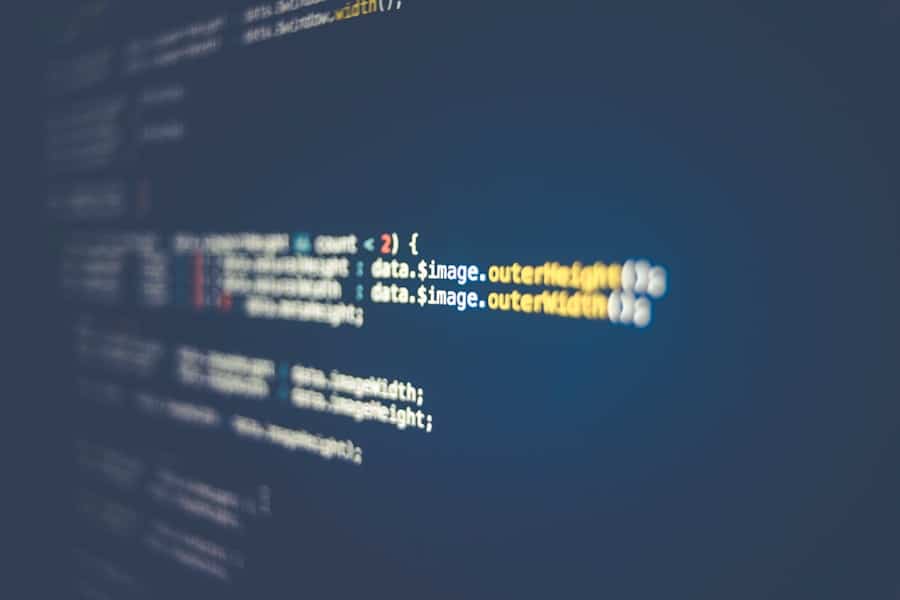In the rapidly evolving landscape of technology, software updates play a crucial role in maintaining the functionality, security, and performance of applications and systems. These updates can range from minor bug fixes to significant feature enhancements, and they are essential for ensuring that software remains relevant and secure against emerging threats. Traditionally, software updates have been delivered through centralized servers, where users download patches or new versions directly from the vendor.
However, this model has inherent vulnerabilities, including risks of tampering, unauthorized access, and distribution inefficiencies. Blockchain technology, with its decentralized and immutable nature, presents a compelling alternative for delivering software updates. By leveraging a distributed ledger system, blockchain can enhance the integrity and reliability of the update process.
Each update can be recorded as a transaction on the blockchain, ensuring that it is verifiable and traceable. This shift not only addresses the security concerns associated with traditional update mechanisms but also opens up new avenues for transparency and trust in software distribution. As organizations increasingly seek to adopt innovative solutions to improve their software delivery processes, the intersection of blockchain and software updates is becoming a focal point of interest.
Key Takeaways
- Software updates are essential for maintaining the security and functionality of software systems.
- Blockchain technology offers benefits such as transparency, immutability, and decentralized control for delivering software updates.
- Blockchain ensures security and authenticity of software updates through cryptographic verification and consensus mechanisms.
- Smart contracts automate the delivery and execution of software updates, ensuring transparency and trust in the process.
- Blockchain has the potential to revolutionize software update delivery by improving security, reducing fraud, and increasing efficiency.
The Benefits of Delivering Software Updates via Blockchain
Decentralized Architecture for Enhanced Security
In a traditional centralized model, a single point of failure can lead to significant vulnerabilities. If an attacker gains access to the update server, they can potentially distribute malicious updates to users. In contrast, blockchain’s decentralized architecture means that no single entity controls the entire update process. Each participant in the network holds a copy of the ledger, making it exceedingly difficult for any malicious actor to alter the update without detection.
Immutable Record of Transactions
Blockchain provides an immutable record of all transactions, including software updates. This feature ensures that once an update is recorded on the blockchain, it cannot be modified or deleted. This immutability not only protects against tampering but also allows users to verify the authenticity of updates before installation. By providing a clear audit trail, organizations can ensure compliance with regulatory requirements and maintain a higher level of trust with their users.
Transparency and Confidence
The transparency inherent in blockchain technology fosters confidence among stakeholders, as they can independently verify the integrity of the software they are using. This increased transparency leads to a higher level of trust between organizations and their users, ultimately resulting in a more secure and reliable software update process.
How Blockchain Ensures Security and Authenticity of Software Updates
The security and authenticity of software updates delivered via blockchain are underpinned by several key features of the technology.
When an update is created, it is hashed into a unique string of characters that represents its contents.
This hash is then included in the next block of transactions on the blockchain. If any changes are made to the update after it has been recorded, the hash will change, signaling that the update has been tampered with. Additionally, blockchain employs consensus mechanisms to validate transactions before they are added to the ledger.
In a public blockchain, this might involve proof-of-work or proof-of-stake protocols, while private blockchains may use more streamlined consensus methods. This validation process ensures that only legitimate updates are recorded on the blockchain, further enhancing security. By requiring multiple nodes in the network to agree on the validity of an update, blockchain minimizes the risk of unauthorized changes being accepted.
Furthermore, digital signatures play a critical role in ensuring authenticity. When a software vendor releases an update, they can sign it with their private key. Users can then verify this signature using the vendor’s public key, confirming that the update indeed originated from a trusted source.
This cryptographic verification process eliminates concerns about man-in-the-middle attacks or rogue updates being introduced into the system.
The Role of Smart Contracts in Delivering Software Updates
Smart contracts are self-executing contracts with the terms of the agreement directly written into code on the blockchain. They play a pivotal role in automating and streamlining the delivery of software updates. By utilizing smart contracts, organizations can establish predefined conditions under which updates are released and installed.
For instance, an organization might set up a smart contract that automatically triggers an update when certain criteria are met, such as user consent or successful completion of a security check. The automation provided by smart contracts reduces the need for manual intervention in the update process, thereby minimizing human error and expediting deployment times.
For example, in a multi-vendor environment where different components of a system are managed by various suppliers, smart contracts can ensure that all parties adhere to agreed-upon protocols for updating their respective software components. Moreover, smart contracts can enhance accountability by recording all actions taken during the update process on the blockchain. This creates a transparent history of who approved what and when, which can be invaluable for auditing purposes.
In industries where compliance is critical—such as finance or healthcare—this level of traceability can help organizations demonstrate adherence to regulatory standards.
The Potential Impact of Blockchain on Software Update Delivery
The integration of blockchain technology into software update delivery has the potential to revolutionize how organizations manage their software ecosystems. One significant impact is the reduction in downtime associated with updates. Traditional update processes often require systems to be taken offline temporarily while patches are applied or new versions are installed.
With blockchain’s ability to facilitate seamless updates through decentralized verification and automated processes via smart contracts, organizations can minimize disruptions to their operations. Additionally, blockchain can democratize access to software updates by enabling peer-to-peer distribution models. Instead of relying solely on centralized servers for updates, users could share verified updates directly with one another through a decentralized network.
This approach not only reduces bandwidth costs for vendors but also enhances resilience against server outages or attacks. Furthermore, as organizations increasingly adopt DevOps practices and continuous integration/continuous deployment (CI/CD) methodologies, blockchain can support these agile frameworks by providing real-time visibility into update statuses across distributed teams. Teams can track which updates have been deployed across various environments and ensure that all stakeholders are informed about changes in real time.
Challenges and Limitations of Using Blockchain for Software Updates
Despite its numerous advantages, implementing blockchain for software updates is not without challenges and limitations. One significant hurdle is scalability. Public blockchains often face issues related to transaction throughput and latency due to their consensus mechanisms.
As more updates are recorded on the blockchain, network congestion can occur, leading to delays in processing transactions. This could be particularly problematic for organizations that require rapid deployment of updates across large user bases. Another challenge lies in interoperability between different blockchain platforms.
Organizations may use various blockchain solutions tailored to their specific needs; however, these platforms may not easily communicate with one another. This lack of standardization could hinder collaboration between different vendors or systems that rely on disparate blockchains for their update processes. Moreover, there is also a learning curve associated with adopting blockchain technology.
Organizations must invest time and resources into understanding how to implement and manage blockchain solutions effectively. This includes training personnel on new protocols and ensuring that existing systems can integrate with blockchain infrastructure without significant disruption.
Case Studies of Companies Using Blockchain for Software Update Delivery
Several companies have begun exploring the use of blockchain technology for delivering software updates effectively and securely. One notable example is IBM’s Food Trust initiative, which leverages blockchain to enhance transparency in food supply chains. While primarily focused on tracking food products from farm to table, IBM has also explored how similar principles could apply to software delivery within its enterprise solutions.
Another example is Microsoft’s Azure Blockchain Service, which allows developers to build applications that utilize blockchain technology for various purposes, including secure software distribution. By integrating Azure with existing development tools and environments, Microsoft aims to streamline the process of delivering secure updates while maintaining compliance with industry standards. Additionally, companies like VeChain have developed platforms specifically designed for supply chain management that incorporate software update delivery as part of their offerings.
By utilizing VeChain’s blockchain infrastructure, businesses can ensure that all components within their supply chains receive timely and verified software updates while maintaining an immutable record of all transactions.
The Future of Software Update Delivery and Blockchain Technology
As organizations continue to grapple with cybersecurity threats and seek more efficient ways to manage their software ecosystems, the future of software update delivery will likely see increased adoption of blockchain technology. The ongoing development of hybrid solutions that combine traditional centralized systems with decentralized blockchain elements may emerge as a practical approach for many organizations. Furthermore, advancements in interoperability standards could pave the way for seamless communication between different blockchain platforms, enabling organizations to collaborate more effectively across diverse ecosystems.
As more companies recognize the value proposition offered by blockchain—particularly in terms of security and transparency—the demand for innovative solutions will drive further research and development in this area. In conclusion, while challenges remain in implementing blockchain for software updates, its potential benefits are significant enough to warrant continued exploration and investment. As technology evolves and matures, we may witness a paradigm shift in how software updates are delivered—one that prioritizes security, authenticity, and efficiency through decentralized solutions.
If you are interested in exploring the latest technology trends, you may also want to check out this article on the features of the Samsung Galaxy Chromebook 2. This article provides an in-depth look at the capabilities of this cutting-edge device.
FAQs
What is blockchain technology?
Blockchain technology is a decentralized, distributed ledger that records transactions across many computers in such a way that the registered transactions cannot be altered retroactively.
How are software updates being delivered via blockchain?
Software updates are being delivered via blockchain by using the technology to securely and transparently distribute updates to users. This can help ensure the authenticity and integrity of the updates, as well as provide a tamper-proof record of the update history.
What are the benefits of delivering software updates via blockchain?
Some benefits of delivering software updates via blockchain include increased security, transparency, and traceability. Blockchain can also help prevent unauthorized modifications to the software and provide a decentralized system for delivering updates.
Are there any challenges to delivering software updates via blockchain?
Challenges to delivering software updates via blockchain include the complexity of implementing blockchain technology, potential scalability issues, and the need for widespread adoption of blockchain for it to be effective in this context.
How does blockchain technology ensure the security of software updates?
Blockchain technology ensures the security of software updates by using cryptographic techniques to create a tamper-proof record of the update history. This can help prevent unauthorized modifications to the software and provide a transparent and secure method for delivering updates.



